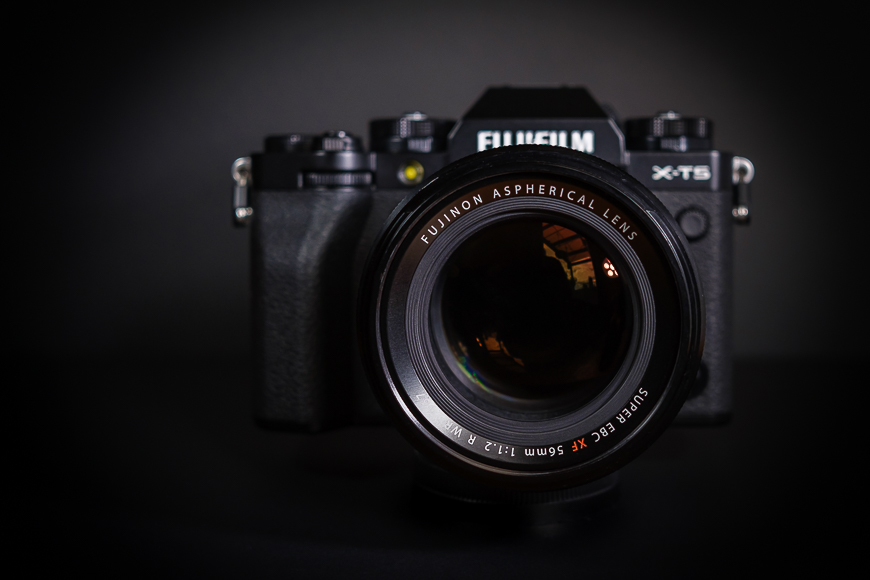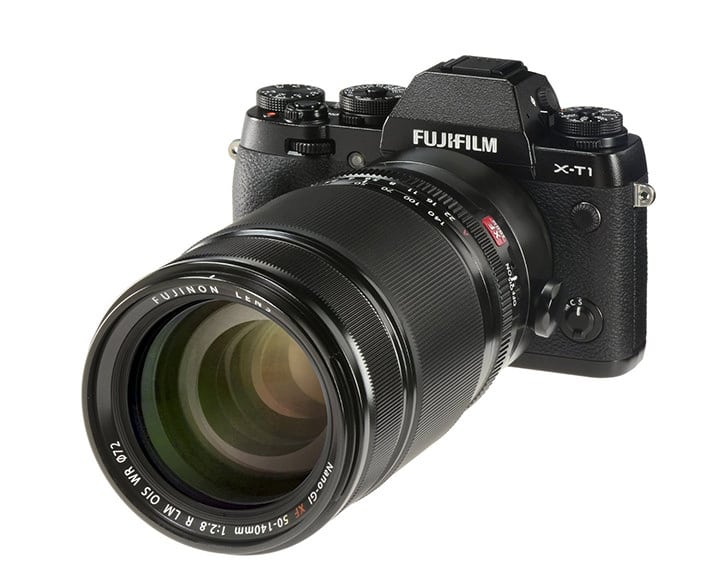
In this article, we’ll consider the question: is Fujifilm pro enough?
Would professional photographers choose to work with Fuji cameras and lenses to create pro-grade images for commercial, fashion, or event photography?
While Fujifilm is a popular choice for hobbyists and enthusiasts, plenty of brands are developing cameras ideal for the pro market.
Furthermore, brands like Canon, Nikon, and Sony have a decades-long lead and solid reputation as must-have systems for high-end output.
Given that Fujifilm X and GFX cameras have only been an option for a little over 12 years, can they truly compete?
Let’s discover why Fujifilm is pro enough for any creative application.
Why Fujifilm At All?
Many hobbyists and enthusiasts rely on Fujifilm X and GFX series cameras and lenses for their photographic pursuits.
I’ve spent nearly a decade detailing why I believe Fujifilm is the best brand for a wide range of photography genres.
I won’t bore you with a recap. Just kidding. Of course I will!
Let’s have just a quick recap! Fujifilm boasts a 90-year history in the optics and photography industry.
Throughout that time, the company established itself as an industry leader through the development of analog film and cameras, precision optics, medical optic applications, and, of course, digital camera technology.
Its history is highly decorated with accolades and industry firsts. As a result, Fujifilm has earned its reputation as a premium photography brand.
Today, we enjoy the benefits of that heritage with exceptional digital cameras and lenses from the X Series and GFX Series.
The X Series range has boomed in the past 12 years with countless fixed lens and X Mount cameras.
That range includes 40 precision lenses delivering exceptional image sharpness and clarity.
The GFX range boasts 50MP and 102MP sensor medium format cameras and high-quality GF lenses.
The latest model is the highly accessible GFX 100S II.
With all that in mind, the question remains: is Fujifilm pro enough?
What Do Pro Photographers Look For?

As with many trades or professions, having the right tools for the job is essential.
A carpenter requires high-quality saws that retain their sharpness and straight edge. A cheap saw will bow and lose its sharpness.
Most importantly, the carpenter demands reliable tools that won’t let them down.
Professional photographers are no different. They need cameras that are reliable and of a standard to suit their needs and complete projects without fail.
Pro-grade digital cameras must be reliable and durable in any working scenario and condition.
Returning to our carpenter, having the best quality saw on the market is excellent, but does it cut in a straight line?
The same applies to a professional camera. You might have spared no expense, but is the image quality up to standard?
A vital element of a professional digital camera is image clarity and resolution in all lighting conditions.
In most professional applications, pixels count towards creating images that sell.
Higher-resolution image sensors ensure that the photographer and editor have workable files. Dynamic range, variable ISO, and pixel density are a must.
But the image sensor is only half the picture. The other half is a fast, powerful, and energy-efficient processing chip.

Professional photographers work quickly, as time is money. Waiting for the camera buffer to clear will not win you new clients.
As a result, the camera processor must be fast.
The processor must handle several consecutive functions to optimize pro outcomes, such as autofocus, subject tracking, high FPS bursts, and fast readouts.
To keep up with the processor, the camera must also accommodate fast storage solutions, such as UHS-II SD or CFexpress cards.
Tethering and wireless transfer, such as WiFi or Bluetooth, are other critical elements of getting the images to their intended destination.
Transferring images directly to a computer, external monitor, or cloud storage further supports professional photography workflows.
A pro-grade camera must have equally capable lenses available for various genres.
Whether it’s a telephoto zoom for motorsport or a standard prime for portraiture, the lenses should be equal to the camera in quality and performance.
The final important aspect of pro camera gear is the ergonomics.
Professional photographers spend hours and hours on a job with a camera in their hands.
The camera must be ergonomic with a deep grip, suitable weight and balance, and accessible buttons and dials.
Our carpenter friend needs a comfortable grip on their saw, too!
What Do Professional Photographers Shoot?

You may be wondering what professional photographers shoot.
The reality is that much of what they photograph is no different from what hobbyists and enthusiasts shoot, just at a higher level with greater stakes.
Hence, there’s a need for reliability, exceptional image quality, and performance.
Moreover, their income and ability to pay the bills depends on the quality of work completed.
Have you ever been asked to take photos at a friend’s party or event? Professional photographers do, too, but they get paid, and all you get is a free meal.
A pro event photographer shoots weddings, parties, and corporate gigs.
A commercial photographer has a broader field of work, including advertising, fashion, real estate, and architecture.
Other professional genres include portraiture and headshots, print and online journalism, and, of course, sports and entertainment.
The point is that pro-grade cameras must deliver top-notch performance and outcomes to meet these demands. Can a Fuji camera meet this brief?
Fujifilm Flagship Cameras
The simple answer to that question is a resounding yes!
I know countless pro photographers who work exclusively with Fujifilm X and GFX cameras and lenses.
What’s more, they’re shooting every possible known genre of the craft at a pro level. To illustrate this point, I’ve selected two of Fujifilm’s flagship camera bodies.
Fujifilm X Series – X-T5

The Fujifilm X Series has proven to be a popular choice for photographers of all skill levels and genres.
Furthermore, the Fuji range offers varying features, performance, and usability.
The reality is that Fuji cameras are just as capable of delivering pro performance and results as any other brand.
The best example of this is the X-T5, which is the premium X Series flagship Fuji camera.
I recently had the opportunity to test and review the X-T5 and instantly fell in love with its pro-grade performance and ease of use.
I’ve owned or shot with every generation of the range since the X-T1.
The X-T range has always been at the forefront of Fuji’s design, performance, and technological achievements.
I remember the first time I picked up the X-T1 and how compact and comfortable it felt compared to my big, bulky Canon DSLR.
While my first Fuji camera was the original X100, I quickly sold my Canon gear to pick up an X-T1 and a couple of Fujinon lenses.
As for the X-T5, it’s roughly the same size and weight as the original yet packs in professional performance, functions, and output.
It features Fuji’s latest 40MP X Trans 5 image processor, the X Processor 5, In Body Image Stabilization, and more.
Professional photographers will love the dual UHS-II SD card slots, fast 15 FPS continuous shooting, and Fuji’s fastest autofocus performance and intelligent subject tracking.
Thanks to its movie mode, the Fujifilm X-T5 also accommodates the needs of professional videographers. It records 6K at up to 30P 4:2:2 10-bit internal recording.
For professionals looking for a premium mirrorless photography camera, the X-T5 is at the top of its game!
Fujifilm GFX Series – GFX100 II

While the Fujifilm X-T5 will keep pace with pro photographers on the move, the GFX takes image quality to the next level.
Or the level above that! The GFX 100 II is at the pinnacle of Fuji engineering, design, performance, output, and Japanese wizardry!
It packs a GFX 102MP CMOS II HS medium-format image sensor that captures ridiculous resolution, clarity, and dynamic range.
Pixel peepers will have to peep pretty persistently at these pictures to point out pesky pixels! Quickly say that five times.
The GFX 100 II is powered by the same X Processor 5 as the X-T5, allowing for fast autofocus, subject tracking, and lightning-quick readouts.
As a pro-grade mirrorless camera, it features dual storage slots, one UHS-II and the other CFexpress.
Image quality is assured with 16-bit RAW file capture and an extended ISO range of 40-102400.
Regardless of shooting fashion in a studio or portraits with only natural light, the 8-stop, five-axis image stabilization allows for optimized outcomes.
While it won’t keep up with the X-T5, the GFX 100 II punches out a healthy 8FPS.
Another key selling point of the medium format camera is its impressive movie mode.
The 100 II captures 8K video up to 30P 4:2:2 10-bit internal recording and supports multiple cinematic recording formats.
The Fuji GFX 100 II is a beastly piece of gear that any pro would be confident in having in their kit.
Pro-Grade Fuji Lenses

Different genres of professional photography require different lenses.
A sports or wildlife photographer needs a fast super-telephoto prime or zooms to capture the winning shot.
A studio-based fashion photographer demands primes with wide apertures. There are too many lens choices and styles to list here.
However, it’s fair to say that Fujifilm offers a wide range of X and GF lenses tailored to the pro market.
Top-shelf Fuji lenses feature exceptional build quality, premium optical output, fast autofocus, and wide apertures.
The weather-sealed lenses, such as the XF 50-140mm f/2.8 or the GF 80mm f/1.7, pair with the equally weather-resistant X-T5 and GFX 100 II.
Check out our review of the Fujifilm XF 50-140mm f/2.8 here!
Why Not Sony, Canon, Nikon?

Adding some historical context is essential when considering if Fujifilm is a pro-level brand.
For decades, brands such as Canon and Nikon have dominated the professional film, SLR, and DSLR market.
Along came Sony, who disrupted that dominance with fresh ideas and impressive performance.
The Sony/Canon/Nikon brands have proven themselves as highly reliable and excellent at capturing professional images.
Given their tenure, many professional photographers have developed brand loyalty and continue to upgrade within the brand.
Then came Fujifilm, with 90 years of proven industry excellence, and suddenly, the market was disrupted again.

Putting aside brand loyalty, professional photographers have many choices among the leading brands.
As for what brand is best, it all depends on the required performance, features, and output.
Not everyone looking to buy a sports car only heads to the Porsche dealership. Some will prefer to look around and check out the performance of a Bentley, Maserati, or Mercedes.
Fujifilm has proven to be as reliable and performance-focused as most other pro-grade brands.
What’s more, APS-C cameras such as the X-T5 or X-HS2 have demonstrated the ability to compete with full-frame cameras from other brands.
Finally, there’s very little competition for the image quality of the GFX 100 II or GFX 100S II. Fujifilm is a worthy competitor in the pro-camera game.
The Final Word

It’s clear that Fujifilm develops high-quality cameras and premium optics to suit a wide range of genres and skill levels.
If you’ve read my other articles, you know I’ve discussed the benefits of specific X and GFX kits at great length.
The point is that Fujifilm is in the business of crafting exceptional cameras and lenses tailored to professional photographers and the high demands of commercial work.
For those shooting with the Fuji range, picking up an X-T5 or a GFX 100 II is instantly familiar and accessible.
I think that’s one of the most attractive things about Fuji gear. It’s effortless to pick up, master, and create beautiful images with.
As a result, professional photographers genuinely make the most of the Fuji ecosystem to elevate their creative output.
Fujifilm is far more than pro-enough.
What are your thoughts on pro photography with Fujifilm? Do you use an X or GFX camera in your line of work?
Credit : Source Post



